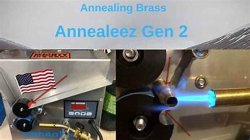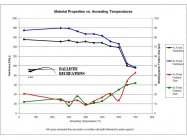700C not F.
All your numbers are wrong. Red is about 1050F. I use to work with a PHD scientist that was a consultant to the copper industry 1050F was his opinion. The flame color change is related to the electrons in an element gaining energy then losing energy and releasing the lost energy as light. Doesn't indicate the brass temp. The flame color change is not an indication of the brass being damaged or zinc burning off. You will get the flame color change with perfectly clean brass. Junk on the surface may affect the exact color.
There are more complicated explanations on internet.
How the Flame Test Works
The basic premise is that heat from a flame gives atoms enough energy that their electrons become excited. Dropping to a more stable energy state involves the release of
photons. These photons have a frequency (light color) that is a characteristic of the element.
Quantum theory holds that electrons around a nucleus are located in discrete energy levels. When energy is supplied to an atom through light or heating a substance, the electrons absorb part of the energy and jump from a low-energy or ground state to a higher energy level or excited state. Consider a single electron. After absorbing energy, it moves faster and farther from the nucleus. The electron is in an excited state. However, the excited state is not stable, and thus the electron ultimately returns to its original, lower-energy ground state.
The electron falls back to its lower-energy or ground state, once previously absorbed energy is released. The energy emitted is a photon of light of specific wavelength or color. A flame test exposes electrons to heat, resulting in
signature colors of flame , enabling identification of elements.
Because different atoms have unique electron orbital arrangements, they emit unique and identifiable
spectral line patterns. The human eye sees the combined result of the electron energy changes as one color. You may be asking yourself how can a color such as red be limited to one element?
At what temperature does brass change color? interner source not given.
The brass would begin to glow a dull red at round about
700 deg C. And as the temperature rose the colour would become more like cherry red. Depending on the type of brass the t,eprature could not go much higher than 900 deg before it melted. Viewed in virtual darkness the first signs of red appear at around 600 deg C.Aug 13, 2022














